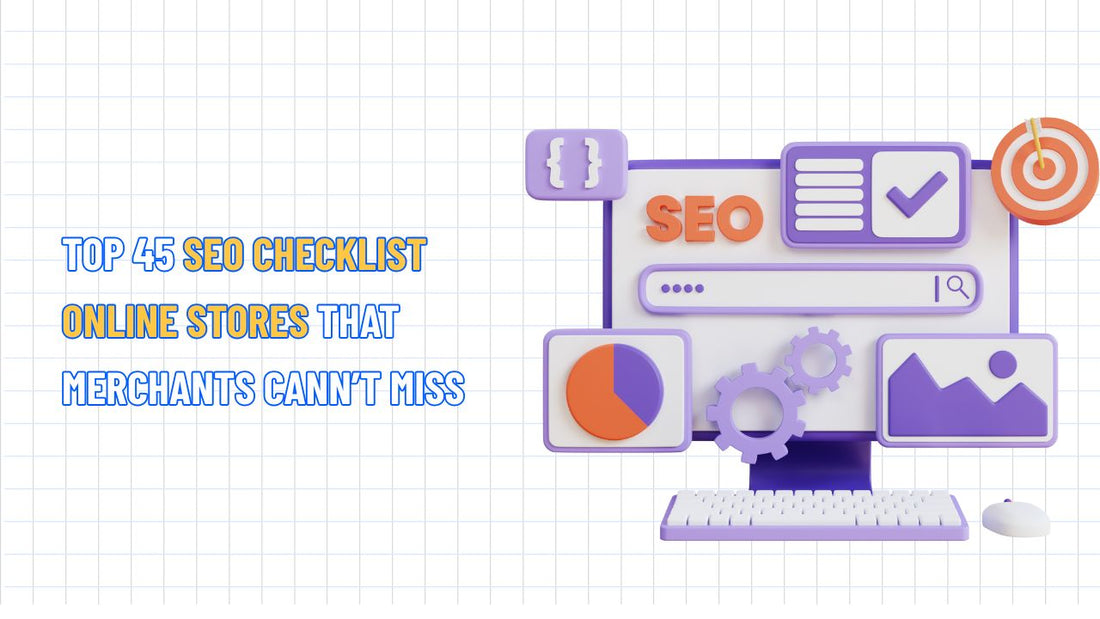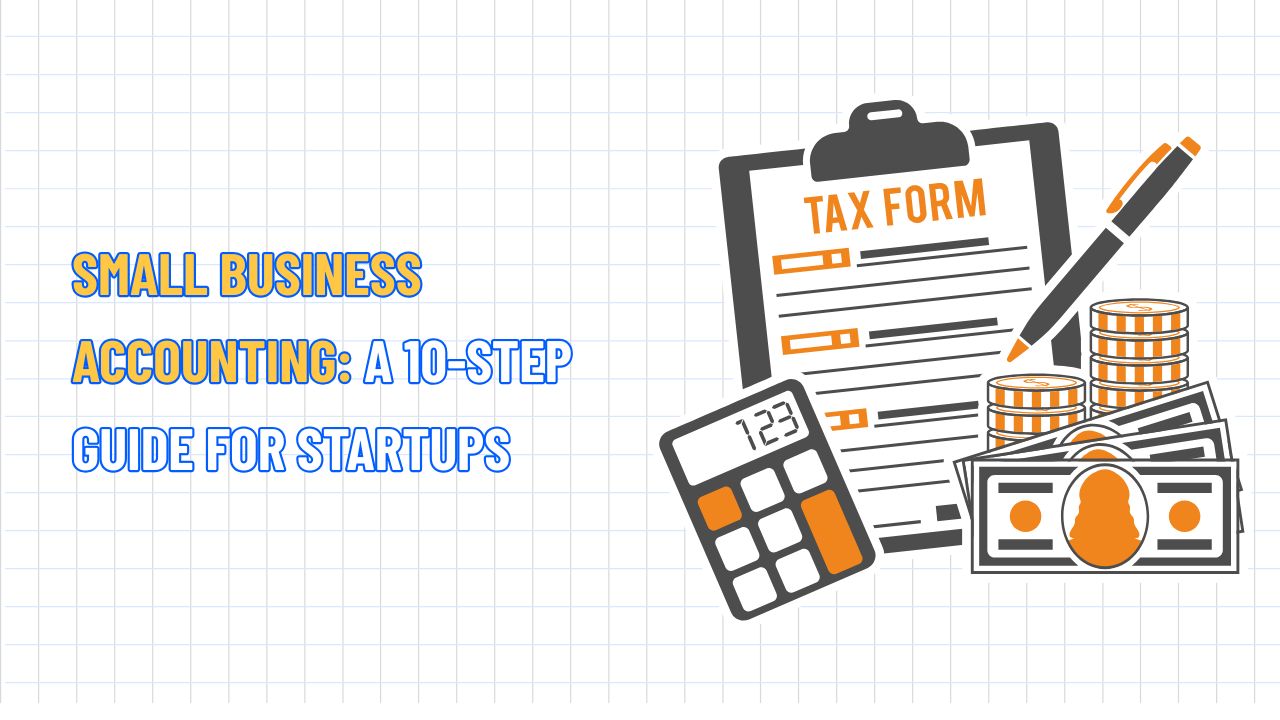TOP 45 SEO Checklist Online Stores that Merchants Cann't Miss
Table of Contents Hide
With over 16.4 billion daily Google searches, capturing even a fraction of that traffic can transform your business’s growth. In this article, NextSky presents a comprehensive Shopify SEO checklist online store to enhance your store’s visibility, attract high-intent customers, and drive conversions for sustainable growth.

Basic SEO checklist
Start with foundational steps to ensure your Shopify store is search-engine-ready.
1. Set up Google Search Console
Use Google Search Console to track organic traffic, evaluate search performance, and identify indexing issues. Verify your domain in Shopify’s admin panel (Online Store > Domains) to access detailed insights.
2. Configure Bing Webmaster Tools
Bing drives significant global search traffic. Create a free account, add your store, and verify ownership to boost visibility on Bing and Yahoo.
3. Submit your sitemap
Shopify automatically generates an XML sitemap, accessible at /sitemap.xml. Submit it to Google Search Console and Bing Webmaster Tools to improve indexing efficiency.
4. Integrate Google Analytics
Set up Google Analytics in Online Store > Preferences to gain deep insights into customer behavior, measure traffic sources, and analyze conversion rates accurately.
5. Check website indexing
Verify indexing by searching “site:yourdomain.com” on Google. If no results appear, wait a week after submitting your sitemap. Ensure your store uses a paid Shopify plan to maintain stable indexing and avoid removal risks.
6. Leverage Shopify’s SEO features
NextSky’s Shopify themes include built-in canonical tags, sitemaps, and title tags for instant SEO optimization. Use keyword research tools like Google Ads Keyword Planner (free) or Ahrefs/Semrush (paid) for deeper data and content strategy refinement.
7. Connect with Google Merchant Center
Install the Google & YouTube app on Shopify to sync your product catalog with Google Merchant Center. This enhances visibility on Google Shopping and free listings, attracting high-intent traffic.
Keyword research checklist
Choosing the right keywords ensures you attract customers with high purchase intent.
8. Conduct comprehensive keyword research
Use Semrush, Ahrefs, or Google Keyword Planner to identify high-value, competitive keywords:
- Target 500–5,000 monthly searches for a balance of traffic and competition.
- Aim for keyword difficulty below 30 to improve ranking chances.
- Focus on commercial intent keywords (e.g., “buy organic coffee beans”).
Prioritize long-tail keywords (e.g., “sustainable bamboo yoga mat”) to reduce competition and reach niche audiences.
9. Analyze competitor keywords
Enter competitor URLs into Semrush or Moz to identify their top-performing keywords. For example, if a competitor ranks well for “vegan skincare,” target related variations like “non-toxic vegan moisturizer” to reach similar high-intent customers.
10. Map keywords to search intent
Categorize keywords by intent to align content effectively:
- Transactional: “buy eco-friendly notebook” → ideal for product or category pages.
- Informational: “how to choose an eco-friendly notebook” → perfect for blogs or guides.
- Navigational: “yourbrand notebook” → direct to homepage or brand page. Matching content to intent improves user engagement and search rankings.
11. Use a keyword research template
Organize keywords by search volume, competition, intent, and content type to build a focused SEO strategy. NextSky offers a free template to streamline your Shopify SEO process.
Read more: TOP 30+ Best Shopify Stores of a Year that You Shoudn't Miss
On-page SEO checklist
Optimize content structure to boost search rankings and user experience.
12. Optimize title tags
Use one H1 tag per page with the primary keyword (e.g., “Sustainable Bamboo Yoga Mat”). Leverage H2 and H3 tags for subheadings to organize content, improve readability, and enhance page structure. Shopify automatically sets page titles as H1 tags.
13. Write compelling meta titles
Keep meta titles under 60 characters, naturally incorporating the primary keyword (e.g., “Eco-Friendly Yoga Mats | YourStore”). Craft engaging, benefit-focused titles to increase click-through rates and SEO performance.
14. Create effective meta descriptions
Write 120–160-character meta descriptions with the primary keyword (e.g., “Shop sustainable bamboo yoga mats with free shipping at YourStore”). Clear, persuasive descriptions boost clicks from search results.
15. Incorporate keywords in URLs
Use short, keyword-rich URLs (e.g., yourstore.com/eco-friendly-yoga-mat). Avoid parameters or underscores, as Shopify handles redirects automatically when URLs change.
16. Add descriptive alt text
Include the primary keyword in image alt text (e.g., “woman using eco-friendly yoga mat”). Use descriptive file names (e.g., bamboo-yoga-mat.jpg) to improve image search rankings and accessibility.
17. Apply schema markup
Add structured data for products, reviews, and breadcrumbs to enable rich snippets like star ratings and prices. Shopify includes product schema, but use apps like Judge.me for review schema.
Content SEO checklist
Create engaging, SEO-friendly content to retain visitors and signal relevance to search engines.
18. Build a content strategy
Plan targeted content for each page type:
- Product pages: Focus on transactional keywords (e.g., “buy organic tea”).
- Category pages: Target topical or category keywords (e.g., “herbal tea”).
- Blog posts: Address informational queries (e.g., “health benefits of green tea”).
Use tools like Answer the Public to discover customer questions and create valuable, relevant content.
19. Improve readability
Add a table of contents with jump links.
- Use short paragraphs (3–5 sentences), bullet points, and subheadings.
- Include multimedia (e.g., product videos, infographics).
- Aim for 1,000–2,000 words for blogs, prioritizing quality.
20. Eliminate duplicate content
Prevent duplicate content to boost SEO:
- Write unique product descriptions to engage customers and gain Google’s favor.
- Use canonical tags for product variants (e.g., different colors/sizes) to consolidate SEO strength to one URL.
- Apply noindex tags to low-value pages (e.g., cart or checkout) to avoid wasting crawl budget.
21. Optimize category pages
Build in-depth category landing pages (e.g., “Organic Skincare”) with SEO-optimized descriptions and strategic keywords. Include smart internal links to related products to enhance navigation and site authority.
22. Add an FAQ section
Include FAQs on product and category pages to address common questions (e.g., “Are your yoga mats eco-friendly?”). This adds content depth, improves user experience, and optimizes for Google’s “People Also Ask” snippets.
Read more: Top Shopify Electronics Stores Inspiring Your Business
Technical SEO checklist
Ensure your Shopify store is fast, secure, and crawlable for optimal performance.
23. Optimize page speed
Use Google PageSpeed Insights to identify and fix performance issues:
- Compress images to WebP format to reduce file size.
- Enable lazy loading for off-screen images.
- Minify CSS and JavaScript to improve load times. Shopify is inherently optimized, but regular checks ensure consistent speed and user experience.
24. Ensure mobile-friendliness
Test your store with Google’s Mobile-Friendly Test. Use readable fonts, touch-friendly buttons, and minimal intrusive pop-ups to enhance mobile experience.
25. Fix broken links
Monitor 404 errors via Google Search Console. Implement 301 redirects for non-existent resources to preserve page authority. Conduct regular site audits with Screaming Frog to maintain technical SEO quality.
26. Improve Core Web Vitals
Optimize for:
- Largest Contentful Paint (LCP): Under 2.5 seconds for fast main content loading.
- Interaction to Next Paint (INP): Under 200ms for smooth user interactions.
- Cumulative Layout Shift (CLS): Below 0.1 to prevent layout shifts during loading.
27. Secure with HTTPS
Shopify provides free SSL certificates. Verify HTTPS in Online Store > Domains. This is a ranking signal and builds customer trust.
28. Optimize sitemap and robots.txt
Ensure robots.txt allows crawling of key pages and blocks irrelevant or duplicate ones (e.g., /admin). Submit your sitemap via Google Search Console and Bing Webmaster Tools for faster, accurate indexing.
Read more: Top 20 Shopify Home Decor Stores to Inspire Your Website
Off-page SEO checklist
Build authority through high-quality links and brand visibility.
30. Analyze competitor backlinks
Use Ahrefs or Moz Link Explorer to study competitor backlinks. Target similar sites (e.g., niche blogs, industry publications) for link-building.
31. Pursue guest posting
Write guest posts for authoritative sites by searching “[your niche] + write for us.” Include backlinks to your Shopify store.
32. Secure press mentions
Use platforms like HARO or Qwoted to connect with journalists and media experts. Promote your store through awards, press releases, or product samples to earn high-quality backlinks and boost SEO credibility.
33. Reclaim unlinked mentions
Use Ahrefs Content Explorer to find brand mentions without links. Contact site owners to request links to your store, enhancing backlink quality and brand authority.
34. Leverage social media
Expand product reach via Instagram and TikTok. Partner with micro-influencers to amplify engagement, generating high-quality links and indirect SEO benefits.
Local SEO checklist
For stores with physical locations, local SEO drives in-store traffic and regional visibility.
35. Set up Google Business Profile
Optimize your Google Business Profile with accurate NAP (name, address, phone) data, photos, and transparent hours. Actively manage and respond to reviews to build trust and attract local customers.
36. List on local directories
Ensure consistent NAP data across platforms like Yelp, Yellow Pages, and Facebook to strengthen local SEO reliability and performance.
37. Optimize contact page
Display full address, phone number, and a map on your contact page for easy discovery. Regularly update hours to ensure accuracy and professionalism.
38. Create location-specific landing pages
Design dedicated pages for specific locations with well-researched, locally optimized keywords (e.g., “Seattle coffee shop”). This boosts page authority and avoids thin content issues.
E-commerce SEO checklist
39. Optimize product descriptions
Write unique descriptions for each product, naturally weaving in primary and long-tail keywords (e.g., “women’s organic cotton t-shirt”). Use bullet points for readability, highlight key benefits, and add FAQs to deepen content and aid decision-making.
40. Collect customer reviews
Use apps like Yotpo or Judge.me to gather and display authentic reviews. Add review schema to show star ratings in search results, boosting brand trust, visibility, and click-through rates.
41. Add high-quality visuals
Upload high-resolution images, videos, and GIFs for professional presentation. Compress files to under 500KB and use a CDN for faster loading. Optimize file names and alt text with descriptive, keyword-rich terms to enhance image SEO and user experience.
42. Implement breadcrumb navigation
Add breadcrumbs (e.g., Home > Clothing > Women’s T-Shirts) to improve user navigation and help search engines understand site structure, enhancing indexing and rankings.
Read more: 23+ Shopify Beauty Stores for Beginners That You Can't Miss
Advanced SEO checklist
43. Target zero-click searches
Optimize for featured snippets and “People Also Ask” sections with concise answers, lists, and schema markup to increase visibility in AI-driven results.
44. Set up an SEO dashboard
Use Google Analytics or Semrush to track key KPIs like organic traffic, keyword positions, and bounce rates. Monitoring trends uncovers strategic opportunities.
45. Use AI tools strategically
Leverage Shopify Magic or similar AI solutions to generate content drafts. Transform AI-generated content with your unique insights to ensure originality and strengthen E-E-A-T (experience, expertise, authoritativeness, trustworthiness).
46. Diversify content formats
Combine high-quality videos, infographics, and user-generated content (UGC) to optimize for Google Images and YouTube, driving superior audience engagement.
By implementing this SEO checklist online store, you can optimize your Shopify store for both search engines and customers. NextSky’s insights will help your store achieve SEO excellence, driving meaningful traffic and sales.










